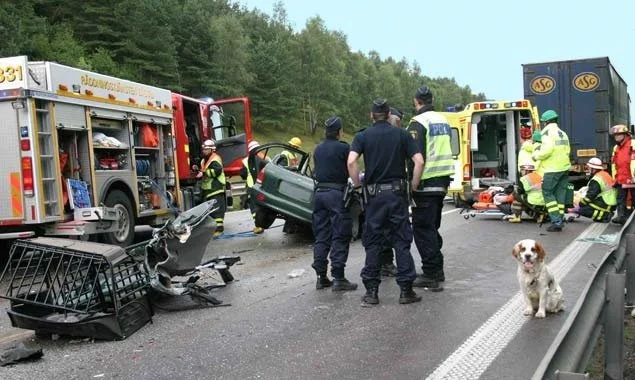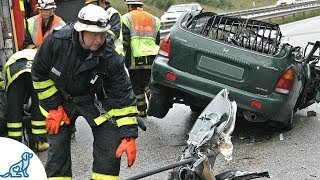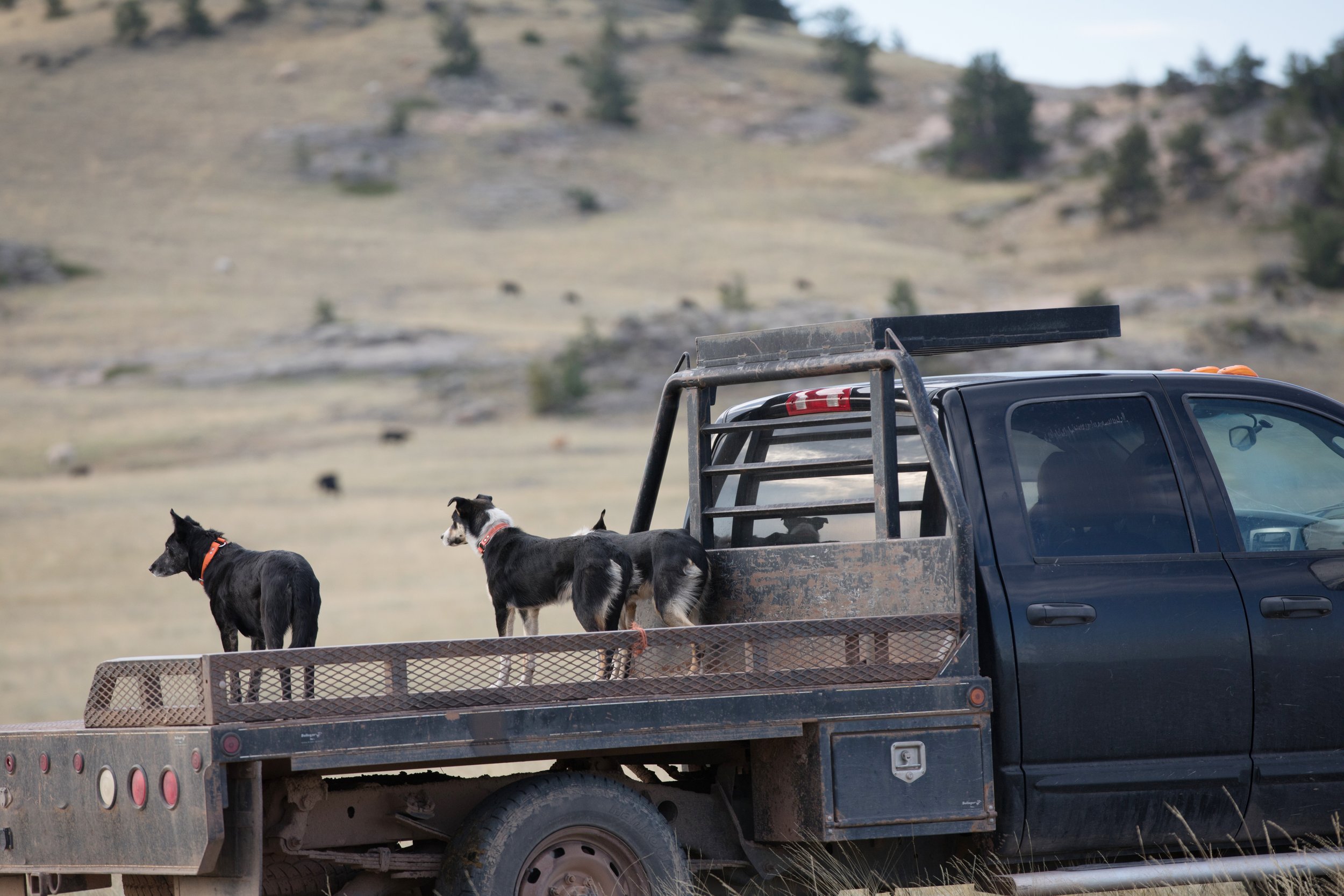The open road beckons to many pet owners who wish to explore the world with their four-legged friends. However, the excitement of these adventures must be tempered with a commitment to safety. Dogs, much like humans, require proper restraint inside a vehicle to protect them and others in case of an accident. This article delves into the dire consequences of transporting dogs without proper restraint and advocates for the use of crash-tested crates, detailing the legal and safety implications, as well as providing guidance for responsible pet ownership during travel.
The Hazards of Unrestrained Dogs in Vehicles
When dogs are transported loose inside a vehicle, they are at risk from several significant hazards. The first and most obvious is the risk posed in the event of a vehicle collision. Without any form of restraint, a dog can be thrown against the interior of the vehicle, against passengers, or even through a window. The forces involved in a collision can lead to severe trauma or even be fatal for a pet.
In addition to collisions, sudden stops and evasive maneuvers, which are often necessary to avoid accidents, can also cause injury to an unrestrained dog. If a driver brakes suddenly or swerves to avoid an obstacle, an unrestrained dog can be tossed around the cabin of the vehicle. This not only poses a risk to the dog, which could be thrown into the dashboard, seats, or other hard surfaces, but also to passengers who might be struck by the dog as it moves uncontrolled through the vehicle.
Now, let's delve into the physics to understand why an unrestrained 75-pound dog can exert a force of approximately 2,250 pounds in a crash at 30 miles per hour. This is based on the concept of Newton's second law of motion, which states that force equals mass times acceleration (F = ma). When a vehicle crashes, it experiences a rapid deceleration; the same deceleration applies to any object not secured within the vehicle, including a dog.
To calculate the force exerted by the dog, we need to know the deceleration it experiences during the crash. While the exact deceleration would depend on the specifics of the collision, we can use an estimation for the purpose of this explanation. If a vehicle comes to a stop from 30 miles per hour within a distance of one foot (which is a severe and abrupt stop, similar to what might occur in a collision), we can calculate the deceleration using the following formula:
Firstly, convert the speed from miles per hour to feet per second for consistency with the stopping distance:
30 miles per hour = 44 feet per second (1 mile = 5280 feet, 1 hour = 3600 seconds)
Using the kinematic equation which relates velocity squared to acceleration and distance (v^2 = 2 * a * d), we can solve for acceleration (a): (44 fps)^2 = 2 * a * 1 foot
This simplifies to: 1936 = 2a
So, the deceleration (a) is: 968 feet per second squared
Now, we can apply Newton's second law. We must convert the dog's weight from pounds to mass in slugs (since force in pounds requires mass in slugs when using feet and seconds for distance and time). The conversion factor is 32.174 feet per second squared (which is the acceleration due to gravity).
75 pounds / 32.174 fps^2 = 2.33 slugs
Now multiply the mass of the dog by the deceleration:
2.33 slugs * 968 fps^2 = approximately 2,256 pounds of force
This calculation shows that in a severe crash, an unrestrained dog can exert a force over 2,000 pounds, which is more than enough to cause significant injury or death to both the dog and passengers.
Additionally, beyond the physical dangers, an unrestrained dog can also lead to driver distraction. A dog that is moving around freely in a vehicle can draw the driver's attention away from the road, potentially leading to erratic driving behavior or taking the driver's eyes off the road completely. This distraction can significantly increase the likelihood of an accident happening in the first place.
The Advantages of Crash-Tested Crates
Crash-tested crates provide a wealth of advantages for ensuring the safety of dogs during vehicular travel. The design and rigorous testing standards to which these crates are subjected mean that they are far more than just containers for pets; they are lifesaving devices that serve multiple functions in the event of a vehicular incident.
1. Engineered for Durability and Protection:
Crash-tested crates are constructed using robust materials that can withstand significant impact forces without breaking or deforming. This structural integrity is crucial in the event of a collision, as it helps to maintain a safe space for the dog within the confines of the crate.
2. Shock Absorption:
These crates are designed with features that help absorb the energy of a collision. Just as cars are built with crumple zones to reduce the force of impact on passengers, crash-tested crates may use materials and engineering solutions that compress or deform in a controlled manner to absorb impact forces, thereby reducing the amount of shock transferred to the dog.
3. Secure Restraint System:
Crash-tested crates are equipped with secure latching mechanisms and anchoring systems that keep the crate in place during a crash. This prevents the crate from becoming a projectile itself and ensures that the dog remains contained within the safety of the crate.
4. Ejection Prevention:
One of the primary purposes of these crates is to prevent dogs from being ejected from the vehicle. Ejection during an accident is one of the leading causes of injury and death for unrestrained pets. A crash-tested crate keeps the dog securely enclosed, greatly reducing the risk of ejection through windows or doors.
5. Debris Protection:
In the chaos of a collision, the interior of a vehicle can become a dangerous environment with flying glass and other debris. A crash-tested crate acts as a barrier between the dog and potential hazards, preventing injury from such materials.
6. Testing and Certification:
In the US, the Center for Pet Safety (CPS) is at the forefront of pet product safety testing. The CPS provides a certification program for pet safety products, including crates and carriers, that have been subjected to comprehensive crash tests mimicking real-life accident scenarios. Products that meet the CPS's stringent safety criteria are awarded a seal of approval, offering pet owners assurance in the product's ability to protect their pets.
Across the Atlantic, the European Union has its own set of regulations concerning the safety of pets during travel. Although the European New Car Assessment Programme (Euro NCAP) primarily focuses on the overall safety of vehicles, including human safety devices, its influence extends to the development of testing protocols for pet safety products. The ECE R17 standard is one such regulation that outlines the requirements for the secure attachment of cargo, which encompasses pet carriers, in vehicles to ensure they remain in place during an accident. Additionally, the ECE R44/04 standard, originally established for child safety seats, provides valuable guidelines that can be adapted for pet travel carriers and restraint systems. Pet safety products that are TÜV-tested are assured to meet or exceed European safety norms, including those relevant standards like ECE R17 and the principles derived from ECE R44/04.
7. Reducing Driver Distraction:
By keeping the dog securely contained, crash-tested crates also help minimize driver distraction. Drivers can focus on the road, knowing their pet is safely restrained, which contributes to overall road safety.
8. Versatility and Comfort:
Many crash-tested crates are designed with comfort in mind, providing ample space for the dog to sit, stand, or lie down comfortably. They often come with features like padded interiors and adjustable ventilation to ensure the crate is as comfortable as it is safe.
9. Peace of Mind:
Knowing that a pet is safely secured in a crash-tested crate provides pet owners with peace of mind, allowing them to concentrate on driving without worrying about the safety of their pet. This peace of mind is invaluable, especially on longer trips or when driving conditions are less than ideal.
When selecting a crash-tested crate, it's essential for pet owners to choose a size-appropriate model for their dog, ensuring a snug fit that will provide the best protection. It's also important to follow the manufacturer's instructions for securing the crate within the vehicle correctly. Proper installation is key to maximizing the safety benefits of the crate.
Here is a list of superior Crash tested Crates:
Trans k9 : http://transk9.com/about-us/crash-tested/
MIM Vario Cage: https://mimvariocage.com
Gunner Dog Crates: https://gunner.com
Not officially Crash tested but also recommended:
Ruff Land Kennels: https://rufflandkennels.com/
Legal Requirements and Global Perspectives
The legal requirements for transporting pets in vehicles can vary significantly from one country to another, reflecting different attitudes and cultural perspectives on animal welfare and road safety.
European Legal Requirements:
In Europe, there is a stronger regulatory approach to pet transportation in vehicles. Many European countries have specific laws that require pets to be restrained while in a vehicle. These laws are based on the understanding that unrestrained pets can cause distractions to the driver, lead to accidents, or result in injury to the pet and passengers in the event of a crash.
- Germany: Under German road traffic regulations, pets are considered cargo, and there is an obligation to ensure that they are safely secured. Failure to do so can result in fines and, if an unrestrained pet causes an accident, points on the driver's license.
- Italy: Similar to Germany, Italian law requires that pets are restrained during transport to ensure they do not distract the driver or pose a danger. Fines can be imposed on drivers who do not comply with these regulations.
- Spain, France, and other European countries: Many have similar requirements, emphasizing the need for pet restraints to ensure safety on the roads.
These laws often do not prescribe the exact method of restraint, allowing pet owners to use harnesses, crates, or other secure methods to ensure their pet's safety.
United States Regulations:
In the United States, pet restraint laws in vehicles are not standardized and can vary by state. While federal laws regarding pet transportation safety are absent, some states have specific statutes or guidelines that address this issue. Below are examples of how some states approach the matter:
- New Jersey: Under New Jersey's animal cruelty laws, an unrestrained pet in a car can be considered a violation. Drivers may be fined between $250 to $1,000 for each offense, and can also be charged with a disorderly person's offense under the state's animal cruelty statutes.
- Hawaii: It's illegal for drivers to hold a pet on their lap while operating a vehicle. Violation of this law could lead to fines and potential safety hazards.
- California: California law prohibits driving with a pet in the back of a pickup truck unless the pet is properly secured to prevent it from falling, jumping, or being thrown from the vehicle.
- Maine, Massachusetts, Connecticut, and Rhode Island: In these states, while there are no specific laws that require pets to be restrained in vehicles, drivers can be charged under distracted driving laws if their pet is found to be a distraction.
- Arizona, Connecticut, and Illinois: In these states, although there are no specific laws that require pets to be restrained, laws do exist that prohibit cruelty to animals. In some cases, if an unrestrained pet is injured in a car accident, the driver could potentially be charged under these cruelty to animals statutes.
Additionally, even in states where there is no specific requirement for pet restraints in vehicles, using a restraint or a crash-tested crate is always the safest option for both pets and humans. Securing pets can prevent them from becoming a distraction to the driver, reduce the chance of injury in the event of an accident, and prevent pets from escaping or becoming lost in the aftermath of a collision.
Because of the lack of a cohesive federal policy, there is a reliance on awareness campaigns and education to inform pet owners of the dangers of having unrestrained pets in vehicles. Organizations such as the American Society for the Prevention of Cruelty to Animals (ASPCA), the American Automobile Association (AAA), and the Center for Pet Safety often advocate for the use of restraints and publish guidelines to help pet owners keep their animals safe during travel.
Global Perspectives:
Globally, the approach to pet transportation safety is diverse. Some countries follow models similar to European nations, with strict laws requiring pet restraints. Others may have no specific regulations concerning pet transportation safety. However, there is a growing global awareness of the importance of securing pets in vehicles, both for the animals' welfare and for the safety of all road users.
This increased awareness is often driven by a combination of advocacy from animal welfare organizations, public safety campaigns, and an expanding body of research that highlights the risks associated with unrestrained pets in vehicles. As a result, we're seeing more countries considering or implementing regulations to improve pet transportation safety.
For pet owners around the world, regardless of local laws, it is best practice to use restraints or crash-tested crates when traveling with pets. Not only does this minimize the risk of distraction and injury, but it also ensures a safer and more comfortable journey for everyone in the vehicle.
The Troubling Trend of Dogs in Pickup Truck Beds
A particularly alarming practice in the U.S. is the transportation of dogs in the beds of pickup trucks without any form of restraint. This exposes the animals to the risk of being thrown out of the truck due to sudden stops, collisions, or swerving. Moreover, this practice leaves dogs vulnerable to environmental hazards and traffic.
The American Veterinary Medical Association strongly advises against this practice, and some states have laws prohibiting the transportation of dogs in the open beds of pickup trucks unless specific safety measures are in place. However, nationwide adherence to safe pet transportation practices remains inconsistent.
Best Practices for Pet Safety in Vehicles
To ensure the safety of pets during travel, pet owners should adhere to the following best practices:
1. Invest in a crash-tested crate that is appropriately sized for the dog and fits securely within the vehicle.
2. Acclimate the pet to the crate gradually, using positive reinforcement to create a comfortable and stress-free association with the crate.
3. Position the crate in the vehicle according to the manufacturer's recommendations, which is often in the back seat or cargo area, away from airbags.
4. Regularly inspect the crate for any signs of wear or damage that could compromise its integrity.
5. Ensure that the dog has adequate ventilation, as well as access to water, especially on longer trips.
6. Never leave a pet unattended in a vehicle, particularly in extreme weather conditions, as the internal temperature of a car can quickly become life-threatening.
Conclusion
The well-being of dogs during vehicle transport is a critical aspect of responsible pet ownership that demands attention and action. Employing crash-tested crates is an essential measure in reducing the dangers that dogs encounter while traveling. Pet owners have a duty to place their pets' safety on par with that of their human family members, recognizing that these animals rely on us for their protection.
By embracing secure travel habits and implementing the use of crash-tested crates, pet owners can significantly enhance the safety of their canine friends. Not only does this practice safeguard the dogs, but it also contributes to a more secure and pleasant travel experience for all. It is through such conscientious actions that pet owners can enjoy the peace of mind that comes with knowing they have taken proactive steps to ensure the safety and happiness of their cherished companions on every trip.
Bart de Gols - Copyright 2024



